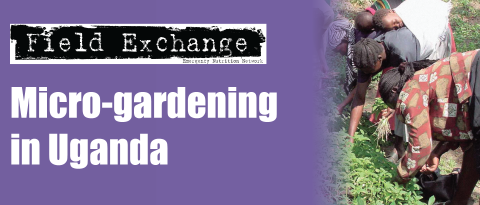Evaluation of ECHO Actions in DPRK
Summary of evaluation1
The European Commission's Humanitarian Office (ECHO) recently conducted an evaluation to assess the appropriateness of their interventions in the Democratic People's Republic of Korea (DPRK) since 2001. The methodology involved examining documentary research and interviews with primary stakeholders. The evaluation team spent three weeks in DPRK, with approximately half the time on field visits to ECHO-supported projects. Although ECHO have supported health, water, sanitation, nutrition and food sectors during since 2001, this summary of the evaluation only focuses on the findings in relation to the food and nutrition sectors.
Since the beginning of the emergency in 1995, international agencies have worked under severe restrictions in DPRK with limitations on access and very limited accountability. Agencies have generally been unable to work with technically qualified Korean counterparts, limiting opportunities for training and capacity building. Analysis of overall food aid to DPRK in recent years shows that political, rather than humanitarian, factors are the primary reason for variations in donor contributions. In DPRK, the food gap has officially been determined by the annual crop assessment and the national nutrition surveys (1998, 2002 and 2004). Uncertainties about the extent of the food gap are compounded by uncertainties about the extent of food aid, since food aid from China is not made public and is invariably the subject of considerable speculation. The methodological limitations of crop assessments are widely recognised. As in many other countries, the crop assessment in DPRK is largely based on figures provided by the government. In DPRK there is limited information available and what is available should be treated with caution. Vulnerability analysis crucially depends on data obtained at a local level. A good deal of this has been collected informally and/or unofficially by WFP in the course of its extensive monitoring programme, though much of it remains unanalysed.
There are particularly positive aspects of the food aid programme. These include implementation of the targeting system through institutions such as nurseries and kindergartens and the local production of fortified food. The targeting system, which is based on data made available by the government, provides WFP with a picture of the groups that require food aid, though not complete beneficiary lists. The division of beneficiaries into groups also allows for the adjustment of coverage, depending on funding availability, and the centralised system makes it possible to assume that most children will attend nurseries and kindergartens.
If economic reform and progress takes off, WFP may find it more difficult to justify the need for food aid in the near future, whether or not the position of vulnerable groups actually improves. Providing data on the access to food of vulnerable groups is more important than calculating the national food gap, and the continuation of WFPs programme will, in part, depend on their ability to persuade donors of the need to continue feeding vulnerable groups.
ECHO support to UNICEF in nutrition includes a wide range of inputs, including micronutrient premix for the local production of fortified food, F-100 therapeutic milk, micronutrient supplements and IEC (information, education and communication) support. The main findings of the evaluation in relation to nutrition included;
- ECHO could have benefited from some expert input on nutrition programming design and implementation and in future, technical assistance on nutrition should be sought, particularly at the time proposals are being reviewed.
- There is only limited implementation of nutrition programmes at a local level in DPRK. Local level implementation should be promoted along with an expansion of appropriate INGO partners.
- Protocols for the treatment of severe malnutrition are not being adequately implemented, leading to decreased impact on reducing severe malnutrition and lower chances of recovery and survival for severely malnourished children. The comparative ability of hospitals, baby homes and orphanages to manage malnourished babies and children should be assessed.
- F100 is being extensively used to feed non-malnourished children, which is inappropriate and is not cost-effective. In future, proper milk sources (not F100) should be provided to children aged 6-24 months who are not malnourished.
- Use of F100 for infants (under 6 months) is dangerous and measures should be in place to prevent this.
- Support to micronutrient premix is a strong component of the programme with potential to reach many vulnerable children.
- Lack of transport prevents some institutions from receiving food from WFP particularly as the quantities are usually small.
1Dammers C, Fox. C and Jiminez M, (2005). Report for the evaluation of ECHO's actions in DPRK 2001-4. January 2005, http://europa.eu.int/comm/echo/pdf_files/evaluation/2005/DPRKreport.pdf
Imported from FEX website


